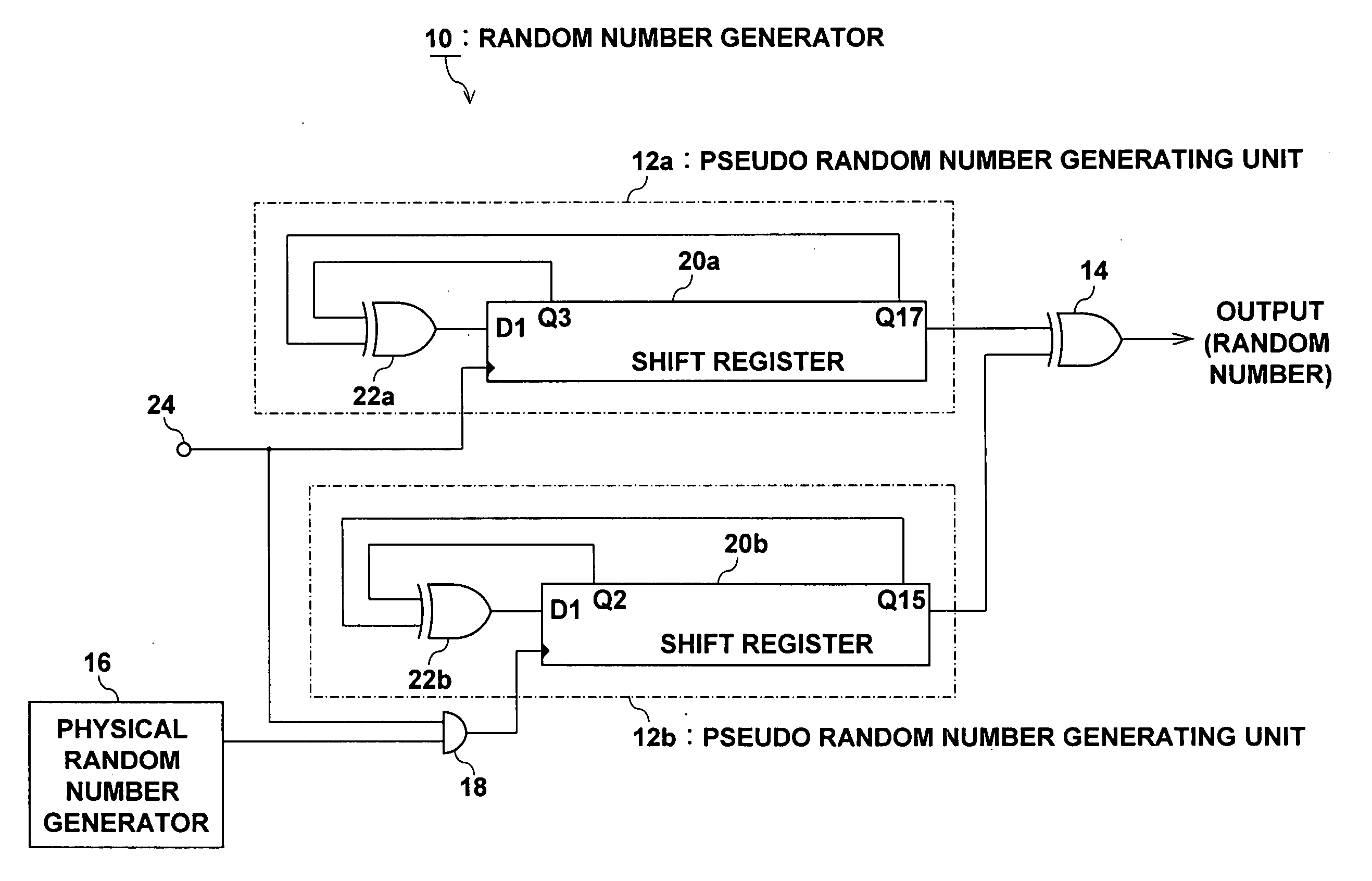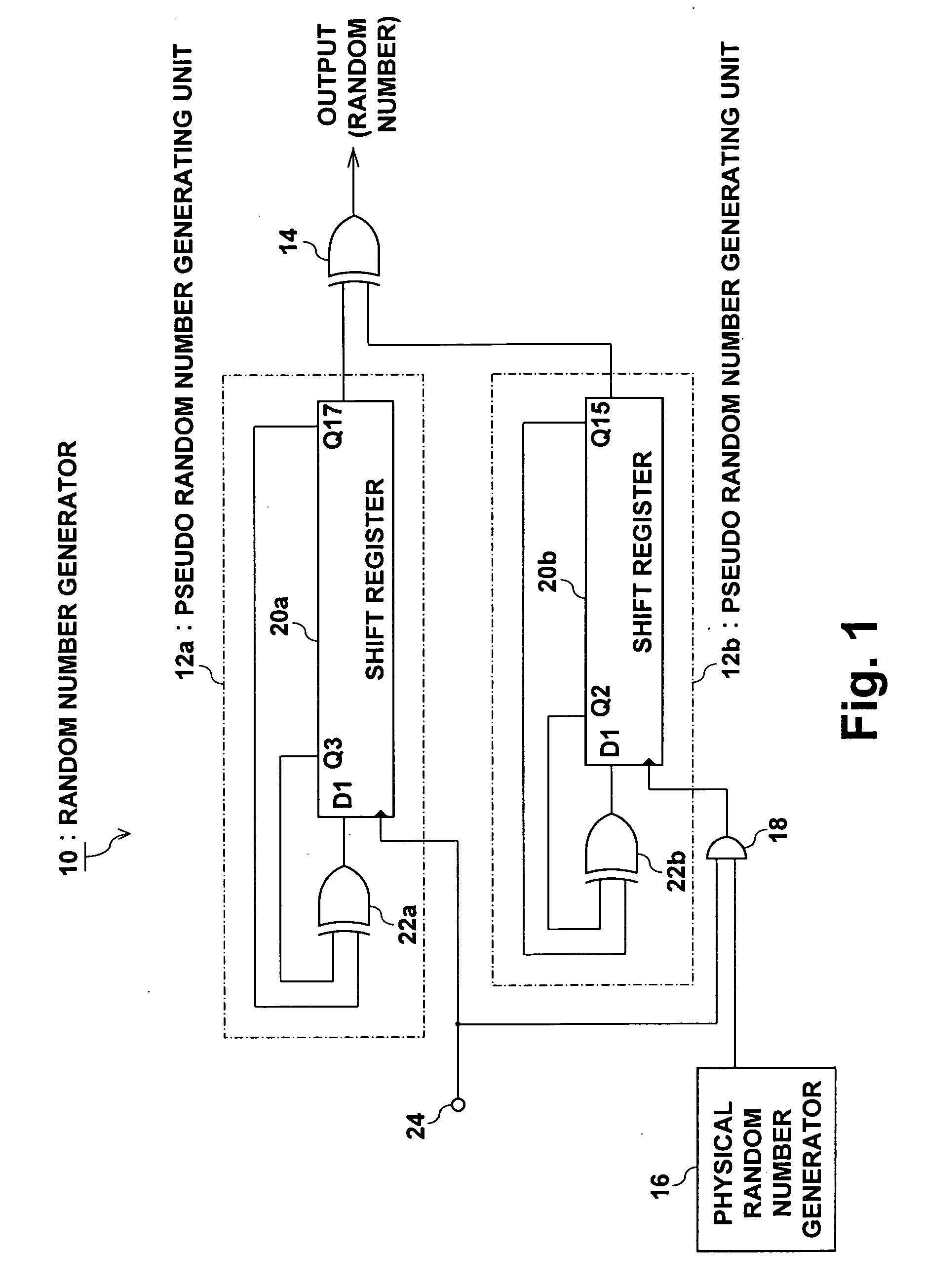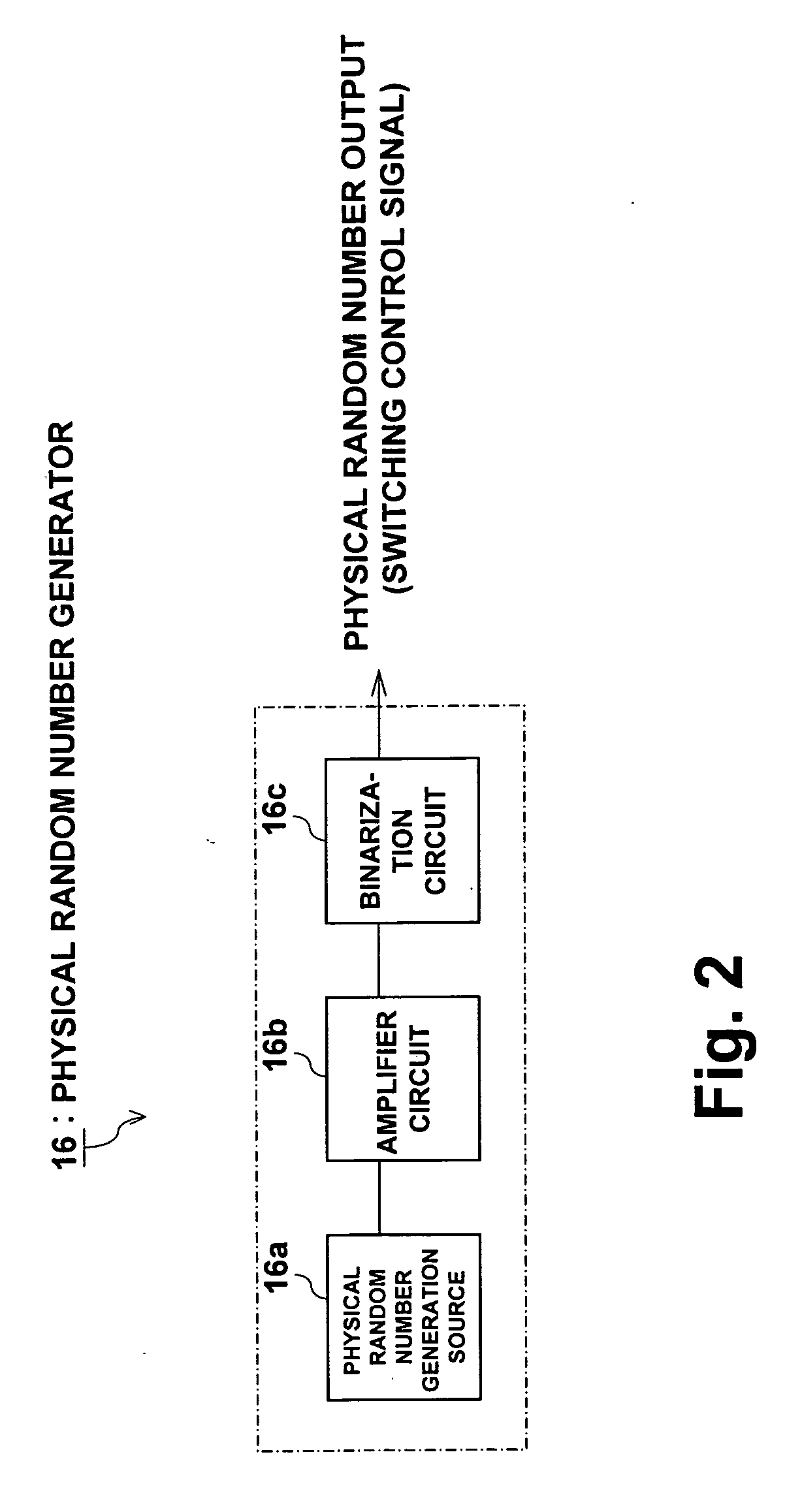Random number generator
a random number and generator technology, applied in the field of random number generators, can solve the problem of difficult to predict the output random number compared to a related art device, and achieve the effect of reducing the predictability of random numbers
- Summary
- Abstract
- Description
- Claims
- Application Information
AI Technical Summary
Benefits of technology
Problems solved by technology
Method used
Image
Examples
first embodiment
[0013]FIG. 1 is a drawing showing the structure of a random number generator 10 of this embodiment, and FIG. 2 is a structural drawing of a physical random number generator 16. The random number generator 10 is comprised of two pseudo-random number generating units 12a and 12b, an output random number generating unit 14, a physical random number generating unit 16, and a switching unit 18. Of these components, the pseudo-random number generating units 12a and 12b respectively comprise shift registers 20a, 20b including a plurality of flip-flops that are successively connected, and EXOR gates 22a, 22b for outputting an exclusive-OR of output values from a specified plurality of tap positions, and are configured as linear shift register code generators for outputting a random number of a specified M-sequence. With the example of FIG. 1, the shift register 20a has 17 flip-flops, is a 17 stage shift register for performing bit shift in response to a clock signal, and generates a feedbac...
second embodiment
[0017]FIG. 3 is a drawing showing the structure of a random number generator 30 of a this embodiment. Here, structural elements that are the same as in the above-described embodiment have the same reference numerals, and description of duplicate sections is omitted.
[0018] With the above described first embodiment, a logical AND of a physical random number output from the physical random number generator 16 and a shared clock signal from the signal source 24 is input to the pseudo-random number generating unit 12b as a clock signal, but with this embodiment a clock signal to the pseudo-random number generating unit 12b is actually the physical random number output from the physical random number generator 16. With this embodiment, the physical random number generator 16 is equivalent to a switching unit. The clock signal CK of the pseudo-random number generating unit 12a is input independently from the physical random number output. With this structure also, the same effects as with...
third embodiment
[0020]FIG. 4 is a drawing showing the structure of a random number generator 40 of this embodiment. Here, structural elements that are the same as in the above-described embodiment have the same reference numerals, and description of duplicate sections is omitted.
[0021] With this embodiment, whether or not a pseudo-random number generated by the pseudo-random number generating unit 12b is input to the output random number generating unit 14 is controlled using a switching unit 48. With the example of FIG. 4, output of the pseudo-random number generating unit 12b is input to the output random number generating unit 14 via a switching unit 48 configured as an AND gate. In the switching unit 48, a logical AND of the physical random number output from the physical random number generator 16 and the output of the pseudo-random number generating unit 12b is acquired, and this logical AND is input to the output random number generating unit 14. Specifically, when the physical random numbe...
PUM
 Login to View More
Login to View More Abstract
Description
Claims
Application Information
 Login to View More
Login to View More - R&D
- Intellectual Property
- Life Sciences
- Materials
- Tech Scout
- Unparalleled Data Quality
- Higher Quality Content
- 60% Fewer Hallucinations
Browse by: Latest US Patents, China's latest patents, Technical Efficacy Thesaurus, Application Domain, Technology Topic, Popular Technical Reports.
© 2025 PatSnap. All rights reserved.Legal|Privacy policy|Modern Slavery Act Transparency Statement|Sitemap|About US| Contact US: help@patsnap.com



